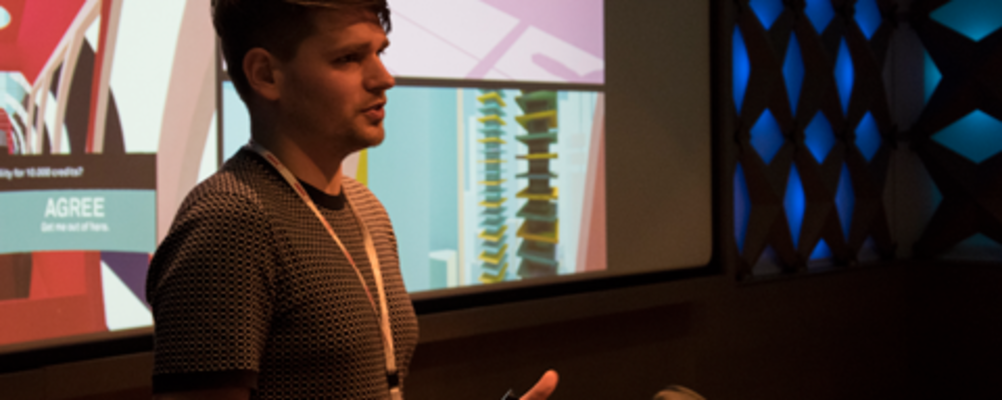21 July 2016
Cultural Heritage in Virtual Reality
On June 9th 2016, the Netherlands Institute for Sound and Vision and CLICKNL organised the event ‘Cultural Heritage in Virtual Reality’.
The event began with a welcome by Kelly Mostert from Sound and Vision. Sound and Vision develops new techniques to represent the material they preserve, like film and sound recordings. This leads to two questions about VR:
- Does VR has an added value?
- Could culture help VR (with visual content for example)
VR could have an added value in the museum, for example as an extra source of information about a certain topic. Museum visitors could walk through a new environment and could get a more individual experience.
Three companies told about their VR projects during this event. Roelof Terpstra from The Virtual Dutch Men told about different cultural VR Projects:
- The Museum of the Future is a project in which you walk through a museum using VR gear. Besides an option to present content and a new experience, VR could also be used to preserve exhibitions. By making a 360 degrees video for example, or making a video suitable for VR. In that way the exhibition can be experienced years after the actual exhibition took place. This project is developed in collaboration with the Nationaal Archief and Europeana. The idea is not to watch flat objects, but to step into a painting like the ‘Nachtwacht’.
- Monobanda Play looks at the possibilities of games, interaction and VR. Niki Smit told about their Deep VR project. Deep is a meditative VR experience in which the user swims under water. The steering works through a breathing mechanism. Users get a elastic strap around their diaphragm and the virtual environment reacts on the rhythm of breathing.
- Dropstuff.nl, Europeana and Sound and Vision worked together on the #BigArtRide project. Users are sitting on a bicycle wearing a virtual reality headset in a VR game. They cycle through a landscape in which paintings have been exhibited. Besides that, there is a two-player mode, in which players can cycle against another user.
The possibilities of VR: The developers
Before lunch, different developers got the chance to pitch their VR project. Find the companies who were attending with some interesting and fun projects below:
- VRmaster has the goal to bring VR to the web in a easy and affordable way. See the project they did with the NS: GLOW coupé.
- Tijdlab is focussing on history and archaeology with their project Hologram vitrines. With a hologram showcase, you can present a whole vase, even if you have just one shard.
- MediaMonks is creative production company who worked together with Intel on an application in which history is brought to live by using face recognition. Watch a video of the project 3D Scanned Chinese Dynasties.
- Zesbaans created a VR environment using the drawings of Jan Rothuizen: Drawing Room. In this VR world, you hear a story while wondering through his drawings.
- House of Secrets focuses, besides digital animation and interaction, on VR projects. Look at their VR projects.
Challenge session
During lunch, everybody had the opportunity to try the different VR demo’s. After that, visitors formed four groups with each a challenge from a cultural institution.
- Rietveld Schröder huis: Apply VR or AR to add an extra dimension. For example by adding a visual layer with the old look of a building.
- Kunst & Wunderkammer: Walking through ancient Holland instead of looking at paintings with landscapes. For example: combining the present and past with 360 degrees video or VR.
- Naturalis Biodiversity Center: 3D scans of fossils and bones that together bring VR dinosaurs to live. What kind of VR application could we develop?
- Museum van Boijmans van Beuningen: Think of a VR experience for museum visitors which brings surrealism closer.
This blog is based on a blog by Romy Blankendaal, student Artificial Intelligence (MSc) at the Vrije Universiteit Amsterdam.


